[HOT] Train My Traffic Person by Molly Pittman & Ezra Firestone
$99.70
- Delivery: You Will Receive A Receipt With Download Link Through Email.
- Why its cheap? Click here

16-Week Paid Traffic Mentorship with Molly Pittman
Join Molly Pittman’s hands-on mentorship program and learn her 6-step traffic system for succeeding as a media buyer in any industry or market.
Hi, I’m Molly!
And becoming a professional media buyer completely changed my life.
Seven years ago I was a bartender in Kentucky and I didn’t even know what paid traffic was.
Now, I have the best job ever: I run my own ad agency, speak on stages across the country & get to work from anywhere in the world.
So how did I manage to succeed in a crowded industry that’s constantly evolving?
I got a mentor! Back in 2012 I got a job at DigitalMarketer under Ryan Deiss, who showed me the ropes and taught me how to think like a marketer. Then, I spent thousands of hours sharpening my skills and developing my traffic system.
From there, I profitably ran over $14 million in ads and helped to 4x the company on my way to becoming Vice President. (Not bad, huh?!)
And as the teacher of DM’s Paid Traffic Certification, I taught thousands of marketers how to improve their advertising. That’s when it hit me: while media buying is my craft — and I love it — teaching is my passion.
Now, I want to teach you my 6-step traffic system for succeeding as a media buyer in any industry or market.
Session 1. How to Think Like a Media Buyer
• Digital media buyers aggregate and purchase attention. They connect consumers with brands that may be of service or interest to their life.
• As a media buyer, you want to think about whether the product/service matches the market or you’re trying to force it—do people really want what you’re selling? You also want to think about whether the product/service is good or not—should it be out in the market?
• We are in the digital age, and human behavior is on our side. Every day that passes, humans are spending more time online, which is why media buying is one of the most valuable skills you could ever learn. It will keep changing, but once you understand the fundamentals, it will make you more essential to businesses because they simply need to be where the market is.
• Media buyers are:
- Marketers: They do more than just pay for ad placements; they understand data, funnel architecture, etc.
- Psychologists: Their job is to understand what a market is feeling, what it’s thinking, and what it needs.
- Researchers: If they don’t know something, they look it up—reading forums, FB groups, blogs, etc. They really immerse themselves in a market in order to understand its psychology and behavior.
- Empaths: They try to feel what the market is feeling and thinking.
- Humans connecting with other humans.
- Communicators: They communicate what a brand has to the relevant market.
• Paid traffic is the road that connects people that are hanging out somewhere online to a product/service. The job of media buyers is to drive the car along that road, to decide what type of road they want to drive on, to decide which road they want to take, and to decide what the car will look like and how it should be presented.
• 8 steps to thinking like a media buyer:
- Step 1. Mind clean up: Media buyers fail mentally by failure itself, fearing to spend more money in order to scale, and their need for the validation of others.
- Step 2. Determine what message, person, product, or service you’re trying to get out into the world.
- Step 3. Get into the mindset of the market.
- Step 4. Determine the reasons why the world will care about this message.
- Step 5. Decide how this message should be presented.
- Step 6. Do the work and launch the campaigns.
- Step 7. Analyze the results.
- Step 8. Iterate, collaborate, and always keep the ball moving forward.
Session 2. E-commerce Funnels
Advertorials
• Before you can ever drive visibility, you have to build a system that’s going to convert a prospect into a customer. Ezra starts with a goal, then he sets his targeting, then he works on his creative (images, videos, etc.), then he optimizes that going forward.
• One of the things to take notes of in today’s environment—people consuming content on mobile phones—is that the sales cycle is longer. It’s going to take 30, 60, even 90 days plus for someone to buy from you with retargeting and similar things. This is why you need to have as many funnel event segments as possible—instead of driving traffic directly from a video to a product offer page, you need to drive it to an advertorial/pre-sell articles because it gives you an opportunity to engage someone with content, create a funnel event segment of people who’ve consumed but didn’t make it to the product offer page, and get people in an open-to-buy mindset.
• Every business needs a front-end/acquisition funnel. The biggest issue that a lot of people have is that they create a funnel and expect it to be their entire customer journey. This acquires customers for them at break-even but doesn’t make them a lot of money. What they don’t understand is that making a lot of money is not the goal of the acquisition funnel; the goal of this funnel is to acquire customers.
• Your pre-sell page needs to relate to the problem the product solves.
Collection Page, Product Page, and Cart
Category & Store Pages
• The goal of these pages is to get people to click through to a product or add to cart. The way you lay this out is dependent upon whether you have multiple products or few products.
Product Offer Pages & Cart
• These are the most important pages on your store! The prospect is almost there, and this page needs to push them over the edge.
• The most important things in your e-commerce funnel are having your conversion assets stacked together and a winning mobile experience for your product offer page.
• When someone enters their email address upon check out, you need to have a cart abandonment email sequence. You want to email 1 email a day for seven days.
Session 3. Info, SAAS, Local, and Service-Based Funnels
• Your traffic strategy should have more than one campaign—you’ll start with FB, but you’ll also incorporate other mediums such as Google or YouTube. You’ll also need different traffic campaigns that go to different offers so that you can speak to people based off of where they are in your customer journey—you’ll have a campaign that generates awareness, another one to generate leads, another one to generate customer, another to re-engage existing customers to get them to buy again, etc.
• Spend 90% of your time really thinking about your messaging and offer. Spend the rest 10% building.
• Thinking of a funnel as a route that you’re laying out to get someone to perform a desired action; it’s a journey that you’re taking someone through to get them to become aware of your brand, become a lead, become a buyer, purchase again, etc.
• You need funnels because it’s really hard to get people to buy your product straight from an ad when you’re not an e-commerce business. E-commerce businesses can drive traffic directly to a product or a pre-sell page because what they sell is tangible—it’s easy to understand the product and assess it.
Info-products need to be explained because they’re not something tangible and need to be explained. The same thing is true for software, especially if you have a SAAS where you’re charging people monthly or annually—you can’t just drive traffic straight to a continuity offer.
Session 4. Creating the Blueprint for Your “Traffic House”
- A traffic system is comprised of multiple campaigns. The campaigns will have different offers, focuses, and goals, but they will all be working together as a team.
- You need campaigns going out to cold traffic—people who’ve never heard of you before—to help you generate new interest in your business, generate new leads, and generate new customers.
- You also need campaigns at the end of the customer journey or bottom of the funnel to help you re-engage people who’ve shown interest in your brands—maybe they’ve visited your website, they’re on your email list, or they’ve purchased from you before. This is really an under-utilized part of most people’s traffic system; people use traffic just to get the word out about their business.
- You want to have at least two acquisition campaigns and one monetization campaign.
- The number of ad sets you have will depend on your budget and objective. Budget isn’t just a function of the cash flow in your business; it’s also very dependent on how experienced you are with ads and the objective of your campaign.
- Here’s a guideline: No matter what you’re doing, always spend at least $10/day on cold traffic ad sets, and probably about $5/day on retargeting ad sets. Anything less than $10 won’t give you enough data back, and you’re just not giving FB enough to play with.
- Be open-minded when it comes to setting budgets because when you spend money on FB, even if you don’t get the exact result that you want, you’re getting data. Suppose you launch your three campaigns and they fail miserably, you’ll be able to figure out which avatar is most interested in your product, which targeting groups work the best, etc.
- If budget/money is not an issue to you, go with as many ad sets as you can since testing is very important.
- When you’re retargeting, unless you have more than 200.000 people you’re trying to retarget, you want to put all of those people in the same ad set so that FB has a lot to play with. So, you’ll usually have just one ad set.
- Retargeting ad set budgets really depend on audience size. Here are a few guidelines—if you ever see that your frequency is low for your retargeting ad sets and that you could be reaching more people, you should increase the budget:
- Less than 5k people: $5-10/daily
- 5k-50k people: $20/daily
- 50k-75k people: $30/daily
- 75k-100k people: $40/daily
- Over than 100k: $50/daily ++
- You don’t want to offer a discount for your entire store as a front end offer; it’s just not specific enough since you’re going to write copy that talks about benefits. Pick one product you want to focus on.
Session 5. Laser Targeting Research & Ad Set Setup
- You can build the best campaign in the world, but if you put it in front of the wrong people, it will fail.
- Targeting is about being in tune with your avatar. You want to answer the following question—being able to answer this question is what makes someone an excellent marketer:
- Who wants to buy your product and why?
- You don’t have to describe your avatar/market be their demographics any longer (e.g. gender, income, marital status, ethnicity, number of children, etc.) because they really don’t tell you much about your avatar, and they show you no purchase intent. Demographics rarely matter unless you truly can only serve a specific demographic.
- The way you want to be thinking about your avatar comes down to intent. You want to know what they’re interested in, doing, and thinking about on a daily basis
Session 6. Ad Copy
- If your budget for each ad set is more than $30, have three ads (i.e., three variations). $30 is a good tipping point that allows you to get good testing of multiple ads in an ad set. If your ad set budget is less than $30, write two variations.
- The biggest mistake that people make when it comes to copywriting is that they make it all about them, whether that be about them personally, about the product/service, or about their brand. The number one rule of copywriting says that it’s not about you, it’s about your prospects and customer!
- Writing copy is all about speaking to the pain or benefit of the end user. You need to know what your audience really wants and position your product/service as the solution.
- The marketing hook is the compelling reason(s) that encourages a prospect or a customer to take the action you’re requesting.
- Facebook is leaning towards ads, posts, and content on their platform that are more positive and uplifting. When it comes to writing your ad copy, you want to spin and speak about pain points in a positive way. This will give you a high relevance score and FB will show your ad—they actually built this into their algorithm based off of certain words that you might be using.
- The relevance score is all about your targeting, copy, and creative—you want to put the right stuff in front of the right people.
- A great sales message simply articulates the shift (i.e., transformation) from a before state to an after state. Your copy needs to explain to people how you’re going to transform their lives. For this, you’ll fill out the Before & After Grid—read forums and Amazon reviews to help you with your research.
Session 7. High-Converting Ad Creatives
- The ad creative is the visual aspect of your ad. It’s the visual representation of the copy.
- Design absolutely matters. If you want someone to trust your brand, you need to look like someone that they can trust. It’s worth hiring a professional designer, even if it’s on Fiverr, to make sure images look as good as they can be.
- The biggest mistake advertisers make is that they use stock photos that have nothing to do with actually what the ad is about. They completely overlook the ad creative since it’s the last thing they give to FB.
- Your creatives should:
- Convey the marketing message: They need to actually tell people something, which is so much more important than color and design.
- Be visually appealing enough to get people to stop in the newsfeed.
- Be “on brand”: Even if you’ve never run an ad before, you have a chance to establish a brand.
- Play off of associations with an existing visual in culture.
Session 8. Campaign Setup & Launch
- When it comes to placement options, leave all of them unchecked—unless you can’t use a certain one for some reason—for your first test because you never really know what will work.
- When you’re done with a campaign, go back and check every ad in every ad set to see if everything is good to go. You also want to create a document with the URL of every ad so you can go back and monitor the comments or hand that over to customer service. Now, you’ll turn the campaign on.
- It’s better to launch the campaigns in the morning because it gives FB a full day of data.
- If your budget is less than 10$/day on an ad set, test only two ads. Don’t test more than 6-7 ads at a time no matter what your budget is because FB’s algorithm can’t properly test that.
- A good target CTR for cold traffic should be between 1.5-2%; anything below that is just crappy.
Session 9. Dynamic Product Ads
- Dynamic ads allow you to dynamically insert different offerings into one carousel ad unit based on what someone has seen in the past or based on what you want to show them.
- The key benefits of DPAs:
- Reach more people: Show people items that are tailored to their interests, whether or not they’ve been to your website or app. (front-end awareness)
- Complete the sale: Retarget your website or mobile app shoppers to remind them of items they viewed but didn’t buy. (retargeting)
- Reach people anywhere: Show ads to people on desktop and mobile across FB, Instagram, and the Audience Network. It’s recommended that you enable all placement options for this particular ad unit.
- Scale your ad creative: Promote all of your items with a unique ad creative without having to configure each individual ad. You’ll have a different ad unit that you can leverage on the front-end, beyond videos and images, to get people interested in your product.
- The best use cases are:
- Front-end conversions: Use a percentage of your budget to drive awareness for your products. It shouldn’t be the bulk of your budget.
- Retargeting product/cart: This is the best use case for DPAs—retargeting people based on the actual individuals that they consumed while they were on your website. Every e-commerce store should do this!
- Post-purchase cross-sells: When someone buys a product from one category, you want to market to them an item from another category. Or when someone buys an item for $100, you want to market to them an item that’s more than that.
- Category promotion (retargeting + loyalty): This allows you to do things like custom imagery and other things when it comes to ad creatives.
Session 10. Data & Analytics
- There are three principles of data and analytics:
-
- Give your data a job.
- Hypothesis testing converts questions into strategies.
- Context lets you account for the unmeasurable.
- Tracking is half of media buying—it’s part 2 of media buying. Part 1 of media buying is understanding the market, coming up with creative concepts, and building everything out on whatever platform you’ve chosen. Part 2 of media buying is trying to figure if you should scale something, test something new, or turn something off, and tracking is what will allow you to decide—if you’re not keeping an eye on what’s going on, there’s no way you can make decisions about whether your ads are working or not.
- One reason why it’s so important to have a tracking plan is that Facebook and Google are credit hogs. You want to validate and verify performance with a third-party source (e.g., Google Analytics).
- There are three big benefits of tracking:
-
- Prove your value to your clients (or boss).
- Optimize based on data, not guesses: When you feel like an ad is not working and you have data to show you what’s going on, you don’t have to waste your time trying to come up with a new creative or whatever.
- Make performance predictable: When you’re just starting, you’ll spend your time throwing stuff at the wall and see what sticks (i.e., you’ll try to make some smart decisions when deciding what a good cost per lead or good cost per acquisition is). Once you’ve gotten really comfortable and familiar with the data in your business, you can start to predict what your results we’ll be every time you spend a certain amount of money.
- Data is confidence. It gives you the security that your ideas, beliefs, and strategy are doing what you think they should do; when they aren’t, it gives you the confidence to decide on the changes that you need to make.
- An analyst’s responsibilities:
- Funnel performance tracking: Keeping an eye on how well people that visit your site with the intent of purchase are move from visitor to buyer.
- Providing campaign red light/yellow light/green light: Essentially saying whether a campaign should be turned off immediately (red light), whether it needs optimization (yellow light), or whether it’s good and/or ready for scale (green light).
- Long term lead and customer valuation.
- Reviewing and doing quality insurance (QA) for campaign tracking—should be done before launching: The analyst should be able to say whether the Facebook events are set up right (e.g. knowing which products were bought).
- Deep-dive metric reviews: Going into GA and figure out information about the audience and other smart stuff to tell the media buyer.
- When you’re looking at what’s happening in your sales funnels, it’s really smart to filter the traffic to only look at how Facebook is performing because you might have a sales funnel or a checkout flow that’s working extremely well for your email but the Facebook traffic isn’t performing as well—you don’t want to mistakenly think that Facebook is the cause and spend more money on it. You want to look only at visitors that came from FB with the medium of CPC.
- You want to check in weekly for proven campaigns, and daily for new campaigns and launches.
Once you have a campaign up and running and it’s doing well, just pulling the numbers every week is good enough because you know more or less that it’s working and you just want to keep an eye on the trends—see whether it’s trending upward or downward.
When you’re in the middle of a new product or campaign launch, trying to look at the key metrics every day will give you insight into how things are starting off. This doesn’t mean that you’ll turn off every campaign that’s not doing well on day one, you just want to understand the trend of behavior.
- Daily (you’re a full-time analyst) and weekly (you’re just the media buyer and you want to keep track of your numbers) routine:
- Red/Yellow/Green for active campaigns: When the RVP is greater than or equal to the CPC, it’s a green campaign. When the RVP is 20% less than the CPC, it’s a yellow campaign. When the RVP is less than that, it’s a red campaign.
- Pulling funnel performance: Go to Google Analytics and see how many people visit each page, then stick that into your tracking sheet.
- Identify areas for a deeper review: For example, if you notice that many people visit the Add to Cart page but not many of them make it to the order form, you want to investigate that.
- Deep dive in Google Analytics.
Session 11. Scaling & Optimization
- Scaling and optimization are where you switch gears and become more reactive.
- Optimization is really just making something better. After you launch your campaign, you’ll wait 3-5 days to make sure you don’t have any false positives/negatives, and as soon as that time period is over, you’ll immediately go into the optimization phase.
- During the optimization phase, if the campaign needs to be improved, you’ll go into a troubleshooting phase. If the campaign is working really well, you’ll move on to scaling.
- Scaling is taking something that’s working and make it bigger (i.e., show it to more people, sell more units). It’s more of a volume game.
- The optimization process has two parts: maintenance and troubleshooting. Maintenance is something that you do every day as a media buyer. Troubleshooting is done only when you don’t get the results you’re hoping for.
- When you choose your success metric, you want to also set up green, yellow, and red benchmarks for yourself:
- Green: This means go. If you see that a particular ad set or campaign is within your green range (e.g., your goal is to generate leads for $1.10 and you’re getting them for less than that), it should be scaled by 50% every 3-5 days.
- Yellow: You’re getting those leads for $1-$1.10. So you’re getting close to that $1.10 mark, in which case you don’t want to scale the budget. You’ll leave things as they are.
- Red: Anything that’s falling outside or below or above, depending on what you’re measuring, needs to be turned off.
- Maintenance informs the second aspect of optimization, which is troubleshooting. Do not panic when you fail! You must dissect the campaign to figure out why it failed.
- When you fail, the answer is not to start completely from scratch. If you change every single aspect of the campaign (i.e., new target, new objective, new copy, new creatives, etc.), you won’t know what worked and what didn’t because you changed too many aspects to really know the effect that any of those changes had.
- Here’s a 3 step process to diagnose your optimization point(s):
-
- Is my offer converting? (Conversion Rate)
- Am I getting traffic at a reasonable cost? (Cost Per Click or CPM)
- Is my ad aligning with the target audience? (Relevance Score)
- There are three ways to scale:
-
- Vertical Scaling (Budget)
- Horizontal Scaling (Targeting)
- Exponential Scaling
Vertical Scaling (Budget)
- You just increase the budget, which is already included in maintenance.
- The speed of budget scaling depends on the longevity intention of the campaign. This is something that you decide at the beginning when you’re setting up your campaign, and it comes down to the purpose of the campaign.
For example, acquisition campaigns that are evergreen could run forever as long as they’re still meeting the success metric, and so you might scale probably every 5-7 days by 50% just so you can feed money to Facebook very slowly so that you don’t fatigue your campaign out very quickly. Other times, you might only have three days because it’s a flash sale, in which case you’ll use a lifetime budget.
- A rule of thumb is to not do it any sooner than 3 days unless you’re in a very tight situation.
Horizontal Scaling (Targeting)
- The reason why you want to spend a lot of time on research and create a big document of possible interests you could target is that so when something is working, you’ll have more people to show it to. Increasing your budget only shows your ad to more people in the interests that you’re already targeting.
- For horizontal targeting, add a new ad set every 3 days or however often you want. You’ll simply duplicate an ad set that’s already working and change the interests.
Exponential Scaling
- You need to understand that even though you’re targeting a group of people that are interested in what you offer, they’re all different. Some people like to read, some of them like to watch videos, some of them are very emotional and some aren’t, some of them have a lot of disposable income and some aren’t, etc.
- You’ll have to create different variations of your campaigns for scale in order to reach as many people in your possible ecosystem as you can. You’ll have to try different things over the years and over the months to make sure that you’re not boring to the market.
- One of the reasons why exponential scaling is important is that sometimes, you’ll just hit a wall with a particular market or a particular offer—the offer has been shown to the audience way too much, in which case it doesn’t matter how many times you change your creative or copy.
- Here are a few questions to help you come up with ideas for exponential scaling:
- What other avatars would be interested in my offer? Going through FB comments and Amazon reviews help with this.
- What other hooks can I use to entice my audience? If your avatar isn’t responding, it could be because your hook isn’t strong enough or boring. This also involves introducing new copy/creative to current target audience every 4-30 days depending on the frequency. If the frequency of your ads is getting up to 3-4%, it’s probably time to start changing your copy/creative a little bit more frequently—introduce more ads. Continuing to introduce new copy and new creatives, you’ll continue to entice different types of people in the group you’re targeting.
- What other products/services can I sell? You can change the products/services you’re currently offering (e.g., change the price, bundling) or/and introduce entirely new ones in order to appeal to more people.
- What other traffic platforms can I reach this audience through?
Session 12. Bots & Messenger Marketing
- Bots are simply a series of automations similar to different CRM flows or email sequences. They’re a series of messages that you send to people and based on how they interact, you’ll send them other messages.
- Messenger marketing is simply the act of marketing to your customers using a messaging app (e.g., Facebook messenger).
- Reasons why you should use FB messenger:
- Email is crowded: Platforms that are similar to messenger such as email are really crowded. Also, people are tired of opting-in on landing pages. Right now, FB messenger is a great way to deliver lead magnets and coupons without having to send people off of FB.
- Opting into messenger is way easier than email: All people need to do in messenger is either click a button or type in a word.
- Ads are cheaper because traffic is staying within the FB ecosystem.
- Completely mobile optimized.
- You get all of the consumers’ real data: When people sign up to your messenger on FB, you get their real names and you can also ask them for their emails.
- Building a bot is much easier/quicker than building a traditional web sales funnel: In some cases when Molly wants to test a new offer, product, or concept, she will build it out in messenger because it will only take her 1-2 hours depending on the complexity. This allows her to test and see if there’s a pulse to the market, then build out a web funnel.
- 5 elements of a great messenger conversation whether it’s automated or a live chat:
-
- It helps the consumer make progress in their life: If someone is having a conversation with your bot, it needs to be in their best interest or they’re not going to continue to have this random conversation and waste their time.
- There is an end goal for you as a marketer: Don’t just build bots that are funny or just fun.
- It has personality, voice, and feels as though the consumer is talking to a real human.
- It’s in messenger style, which includes short-form text, emojis, etc.
- The consumer needs to have options and feel as though they’re creating their own experience.
Sales Page:
https://landing.smartmarketer.com/pages/tmtp-mentorship
Proof of payment:
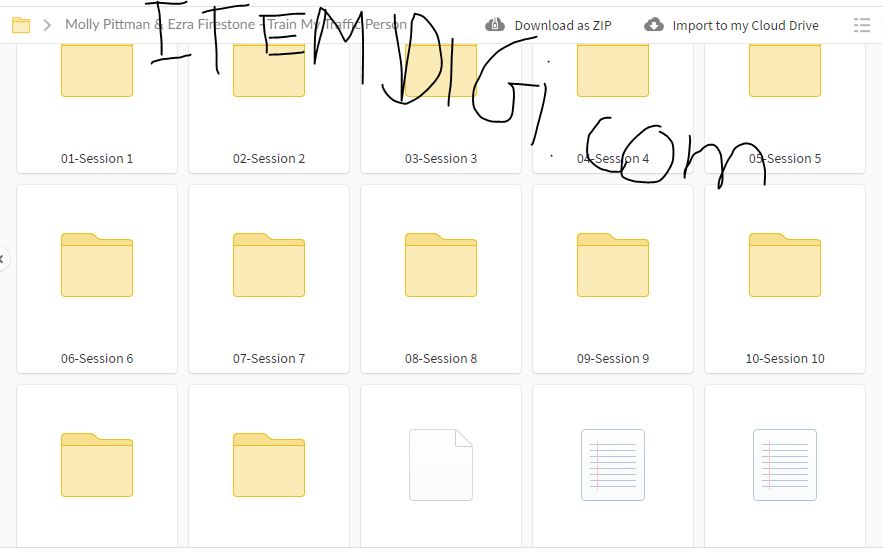

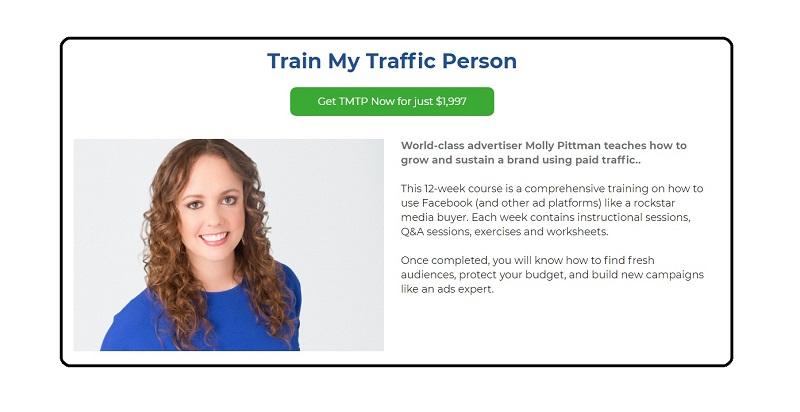
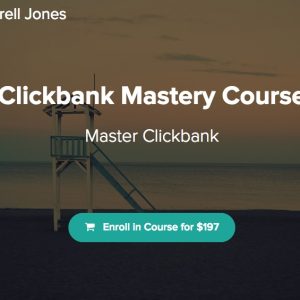
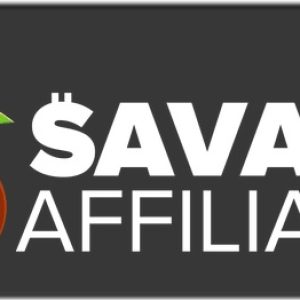
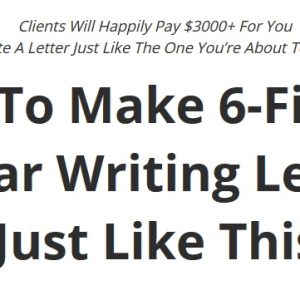
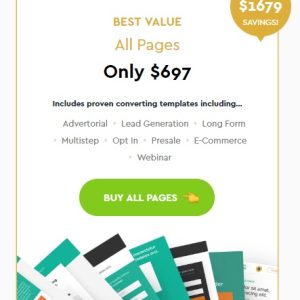
Reviews
There are no reviews yet.